Deamination of amino acids in the liver produces
- A. blood sugar
- B. glycogen
- C. bile
- D. urea
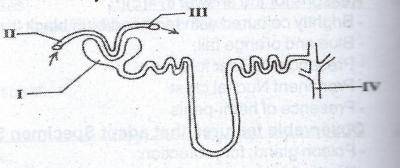
The diagram above is an illustration of the urinary tubule in a mammal. Which of the following substances is greater in concentration in the part labelled IV when compared to that part labelled I?
- A. Lipid
- B. Glucose
- C. Urea
- D. Uric acid
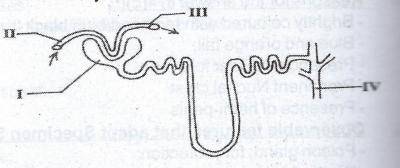
The diagram above is an illustration of the urinary tubule in a mammal. The part which contains lowest concentration of urea is labelled
- A. I
- B. II
- C. III
- D. IV
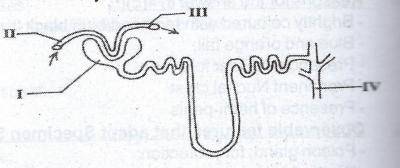
The diagram above is an illustration of the urinary tubule in a mammal. Which of the following substances is found in the part labelled II only?
- A. Lipid
- B. Glucose
- C. Urea
- D. Uric acid
Which of the following actions does not occur during exhalation in man?
- A. Thoracic cavity decreases in volume
- B. Diaphragm flattens
- C. Ribs move down and in
- D. Air pressure increases in the thoracic cavity
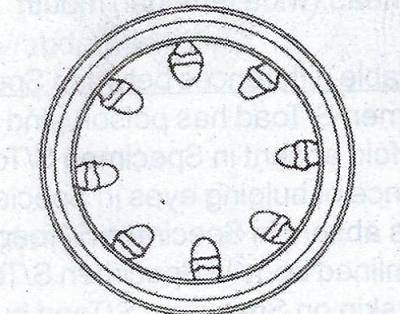
The diagram above illustrates the transverse section of a
- A. dicotyledonous root
- B. monocotyledonous root
- C. dicotyledonous stem
- D. monocotyledonous stem
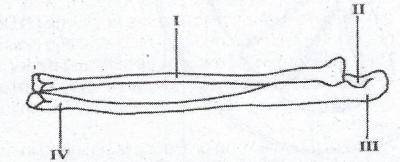
The diagram above illustrates a part of the human skeleton. The labelled part that provides surface for the attachment of the triceps is
- A. I
- B. II
- C. III
- D. IV

Which of the labelled parts of the diagram of the part of the human skeleton articulates with the head of the trochlea to form a hinge joint?
- A. I
- B. II
- C. III
- D. IV
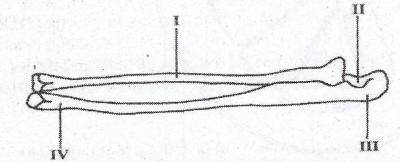
The diagram above illustrates a part of the human skeleton. It represents the bones of the
- A. upper arm
- B. lower arm
- C. upper leg
- D. lower leg
The organism that can carry out both autotropic and heterotrophic modes of nutritions is
- A. Chlamydomonas
- B. Eudorina
- C. Euglena
- D. Spirogyra
An example of osmosis in plants is the
- A. movement of water through the xylem
- B. loss of water vapour from the stomata
- C. translocation of food through the phloem
- D. absorption of water from the soil by the root
Which of the following cell organelles is the site for the production of ATP?
- A. Lysosome
- B. Nucleus
- C. Mitochondrion
- D. Ribosome
Which of the following organisms cannot exist freely on its own?
- A. Chlamydomonas
- B. Amoeba
- C. Paramecium
- D. Plasmodium
The structural similarities in Paramecium and Euglena are in the
- A. shape of locomotory organs
- B. blunt anterior and pointed posterior
- C. presence of micro and mega nuclei in both
- D. presence of anterior and posterior contractile vacuoles
Which of the following groups of animals do not possess a nervous system?
- A. Porifera
- B. Cnidaria
- C. Platyheminthes
- D. Nematoda


